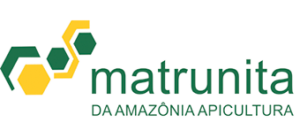
Cipó Uva
The Cipó Uva flowers in the months of September to November, when most of the other plants are not flowering, allowing this way, to obtain a monofloral honey. The characteristics of the grape vine honey are: very clear honey (0 to 25mm), consistent (moisture from 15 to 17%), low HMF index (less than 5mg/kg). Smooth taste, very special, fragrant aroma.
The region where we can find the cipó uva flower is in the Chapada do Araripe, state of Ceará. A region of environmental preservation with native forests, 100% organic.
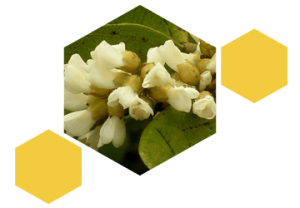
Mangue
Mangue honey comes from coastal regions, where the tide invades the mangrove plantations. That's why this honey has a salty taste, which makes it stand out from other honeys. Honeys with lower humidity (18.5%) can be found in the state of Maranhão. In the mangroves you can get a 100% monofloral honey, because there are no other flowers in these regions. Another positive factor is that these regions are exclusive for 100% organic beekeeping.
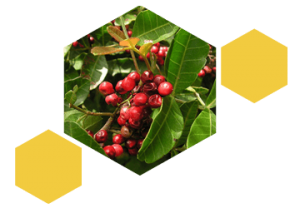
Aroeira
Honey from mountainous regions in the central south of Ceará. During the flowering period, between the months of July and September, its crown is completely without leaves, covered only by flowers. The honey produced from the flowering of the mastic tree is very special. It has medicinal properties, among them the power of healing and antimicrobial action. The honey produced from the nectar of the Aroeira flower has a humidity between 14 and 16%, a very dark colour and a strong and very pleasant taste. The location of the plantation favours the production of a monofloral honey and the predominance of the flavour of 100% organic mastic honey.
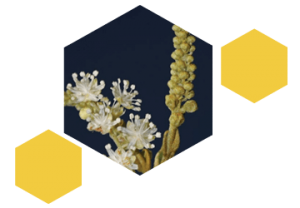
Marmeleiro
Considered one of the main sources of nectar in the caatinga, the flowers of the Marmeleiro are very fragrant, attracting various insects, especially bees. This characteristic favours the use of this species for the breeding and conservation of bees. The honey produced by the quince tree is highly appreciated for its colour, flavour and especially its texture. It has a clear colour, low humidity (18% approx.) and a smooth and remarkable flavor. The flowering period is during the rainy season. The main production region of this honey is in Picos, Piauí, a region which favours the production of 100% organic honey.

Angico
The flowering of this species occurs in masses and its crown has exuberant beauty during the dry season. Its inflorescences are formed by small, white flowers with a pleasant smell. Bees are very attracted to the species and the production of honey from this flower has a high potential. The characteristics of Angico honey are low humidity, yellowish colour, clear and mild flavor and very pleasant. The main production region of this honey is in Picos-Piauí, a region that favors the production of 100% organic honey.
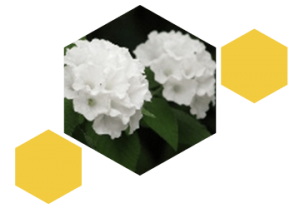
Moleque duro
The blooming of "Moleque Duro" is in the Sertão of Bahia. It occurs during the rainy season from January to March. Its inflorescences are composed of delicate, white and small flowers. The nectar of these flowers attracts a lot of bees. The honey of these flowers is very dark, with a strong and remarkable taste. Very low humidity ranging from 15 to 16%. It is a very appreciated and tasty honey and completely organic.
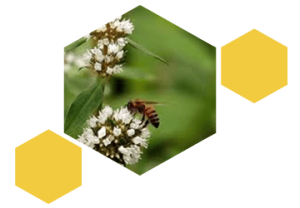
Vassourinha
The flower of the Vassourinha attracts a lot of bees, it is a flower that has great production capacity. The honey has remarkable characteristics such as strong smell and taste. The humidity is generally good, around 18% and the colour is light amber.
